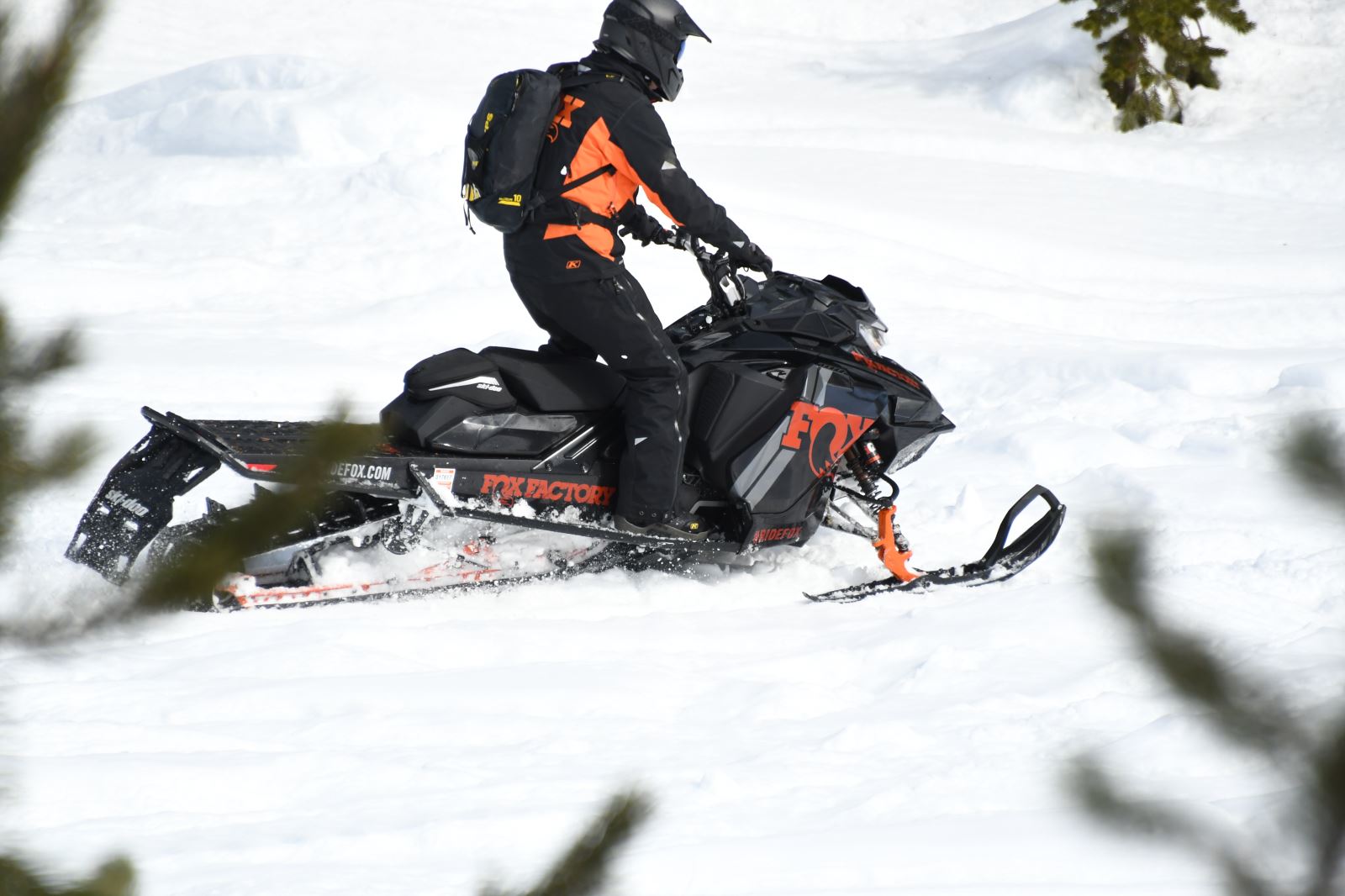
When the rear track shock is in lock-out, it dramatically increases damping, yet allows blow-off for large bump absorption.
Since mountain riding tends to be a combination of multiple up-and-downs, the ideal method of setting up a suspension is to have a stiff rear shock for climbing and a soft rear shock for descending.
Most snowmobilers will put their shock settings in a position that allows them the greatest capability in climbing … then they just live with the sloppy handling of the sled during descent. The iQS allows you to switch between the two immediately and as often as you want.
We found that by switching to the softer position when coming down a steep slope, the suspension was much more predictable and tended to “mold” to conform with the terrain; this made for much better control and handling. This is a great thing considering that when gravity takes over an object, you tend to hit anything in its path of a natural descent.
Although the system is expected to retail for $3,995, you get a complete shock package and switch control module with the kit. The iQS System includes two front Fox iQS ski shocks, one center track Fox iQS shock, one rear track Fox iQS shock, Bosch SCU, switch control module, wiring harness and cable guards.
For more information, visit www.ridefox.com.